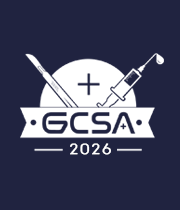Title : Biliary sludge & microlithiasis: how the diagnosis delays referral and definitive management with a laparoscopic cholecystectomy
Abstract:
Biliary sludge or microlithiasis is a common incidental finding in both ultrasound and CT examinations. Many patients who have undifferentiated abdominal pain receive these investigations and hence clinical judgement must be applied more judiciously than ever in the current era. Incidental gall stones are commonly encountered during the above examinations and hence medical professionals are more familiar with their management, including when to refer to a general surgical unit for consideration of definitive manage via a laparoscopic cholecystectomy. Biliary sludge or microlithiasis is a less know entity which causes delay or inappropriate referrals, subjecting patients to increased morbidity and complications. Biliary sludge or microlithiasis is managed according to history, clinical examination and imaging, with its management mirroring that of cholelithiasis. Despite this, many practitioners are unaware that their patient with gall bladder sludge and colic-like upper abdominal pain are amenable to surgical intervention. This observation provides the basis for the primary objective – to identify if hospital patients with biliary sludge have a delayed time to referral and laparoscopic cholecystectomy.
Methodology: Patients who underwent a laparoscopic cholecystectomy from April 2020 – April 2023 at the Royal Brisbane and Women’s Hospital were analysed. These patients were retrieved via the ORMIS database via ICD procedural codes. Of 1019 patients, 101 had biliary sludge on imaging. The time from imaging to referral and laparoscopic cholecystectomy were analysed individually.
Results: Patients who had biliary sludge on imaging had a referral time of +2.1 days and a laparoscopic cholecystectomy time of +3.4 days compared to cholelithiasis or gall stone patients.
Conclusions: Results of this study suggest that education to hospital units surrounding biliary sludge or microlithiasis would improve throughput of patients to receive definitive surgical management, thereby decreasing time in hospital, health service resources and patient morbidity.
Audience Take Away Notes:
- The audience will learn the value of providing education to referral services such as the emergency department and other inpatient units. In turn this will financially benefit the health service, allow a high throughput of patients, and decrease patient morbidity. This poster/research helps to convey the importance of the history and physical exam aspects when considering a referral. The aim of the paper is to raise awareness surrounding the nuances of biliary colic like pain and to encourage appropriate referral. The research provides a starting point for future research into the outpatient referral setting, which is arguably far more substantial but would require a large team to gather data from primary care centres (GP practices) who often initiate subacute referrals.



